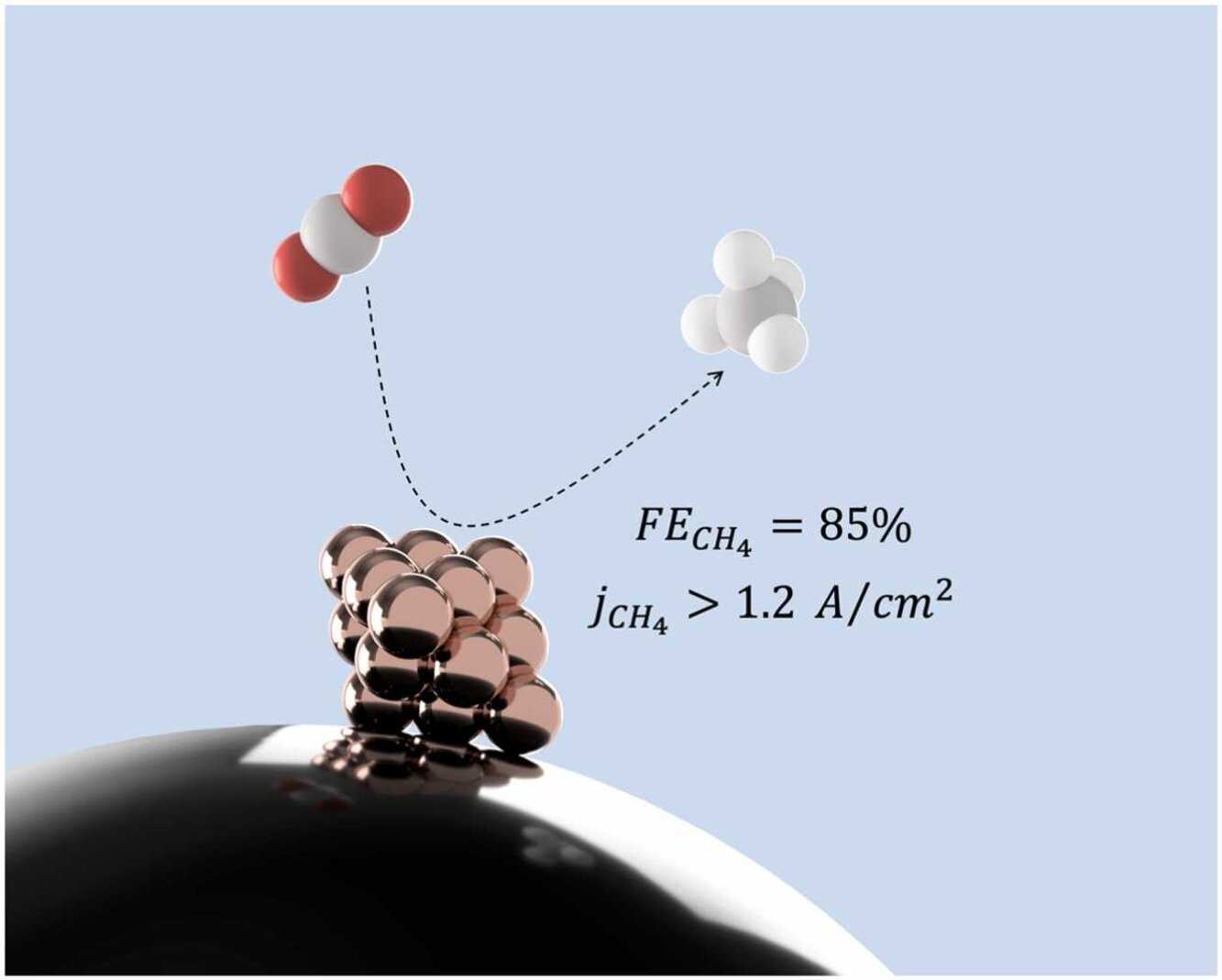Carbon in the atmosphere is a major driver of climate change. Now researchers from McGill University have designed a new catalyst for converting carbon dioxide (CO2) into methane – a cleaner source of energy – using tiny bits of copper called nanoclusters. While the traditional method of producing methane from fossil fuels introduces more CO2 into the atmosphere, the new process, electrocatalysis, does not. “On sunny days you can use solar power, or when it’s a windy day you can use that wind to produce renewable electricity, but as soon as you produce that electricity you need to use it,” says Mahdi Salehi, Ph.D. candidate at the Electrocatalysis Lab at McGill University. “But in our case, we can use that renewable but intermittent electricity to store the energy in chemicals like methane.”
By using copper nanoclusters, says Salehi, carbon dioxide from the atmosphere can be transformed into methane and once the methane is used, any carbon dioxide released can be captured and “recycled” back into methane. This would create a closed “carbon loop” that does not emit new carbon dioxide into the atmosphere. The research, published recently in the journal Applied Catalysis B: Environment and Energy, was enabled by the Canadian Light Source (CLS) at the University of Saskatchewan (USask). The team plans to continue refining their catalyst to make it more efficient and investigate its large-scale, industrial applications. Their hope is that their findings will open new avenues for producing clean, sustainable energy.



Making more methane seems like a risky option, given its role in climate change.